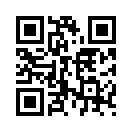Photoluminescent pigment searching on Airport
Airport operations in nighttime or during reduced visibility depend solely on lighting that is powered by electricity. Indispensability of electricity has made airport nighttime operations vulnerable to a variety of problems, such as failure of main electrical sources, breakdown of constant-current regulators, wiring or battery failure, and lamp failure. Attempts to overcome these problems have led to the development of alternative nonelectrical sources of lighting. These alternatives should enhance existing lighting systems and be able to provide visual guidance in absolute darkness in the event electrical power is lost. These alternatives must be cost-effective and capable of widespread implementation. One alternative is based on photoluminescent technology.
At the request of the Office of Airport Safety and Standards, the Airport Safety Technology Research and Development Visual Guidance Subteam conducted an initial assessment study on the use of photoluminescent materials in an airport environment.

The fundamental principle of photoluminescent technology is the ability of the photoluminescent material to absorb and store ambient ultraviolet light energy from its surroundings and emit the stored energy as visible light. Two particular photoluminescent pigments have been used to develop marking systems: zinc sulfide and strontium aluminate. Both afford a pale, flat, yellowgreen color when viewed in a lighted environment. In darkness, the zinc sulfide material glows with a more yellow-tinged light compared to the greener emission of the strontium aluminate. They have been used in airport markings, reflectors, and signs, as well as applications such as low-location lighting and escape route marking systems in aircraft. These materials are environmentally friendly, nontoxic, nonradioactive, and have good adhesion and weather resistance.

The manufacturers were asked to provide samples and specific information about their products to evaluate the material’s luminance characteristics and its suitability for use in an airport environment. In August 2001, the illumination, duration of useful light, and emission decay rate of the test samples were evaluated using photometric and subjective tests at the Federal Aviation Administration William J. Hughes Technical Center. Based on the results of this study, none of the test samples demonstrated a satisfactory level of luminance from sunset to sunrise.
In April 2008, another manufacturer provided photoluminescent material samples. A study was conducted to assess the viability of these samples. This study indicated that the luminance of the samples decreased drastically soon after they were removed from sunlight. The 2008 photoluminescent material sample measurements were compared to the 2001 samples. Of the 2001 samples, the highest valued initial luminance was approximately 12 times greater than the rated 2008 sample. The luminance values of all the samples dropped sharply to less than 50% of their initial value after 10 minutes, and then continued to decrease. The 2008 samples decreased at a slower rate compared to the 2001 samples, but it still was not adequate for an airport environment.
Currently, none of the photoluminescent samples emit enough luminance to be considered useful in an airport environment


 Mobile/Whatsapp:86-178-4316-7788
Mobile/Whatsapp:86-178-4316-7788 Email:Karl@tnn.com.cn
Email:Karl@tnn.com.cn